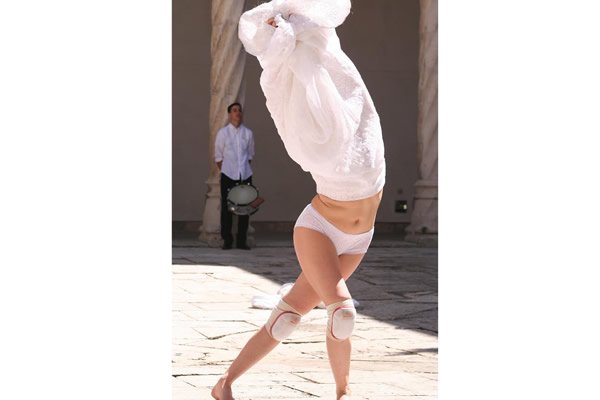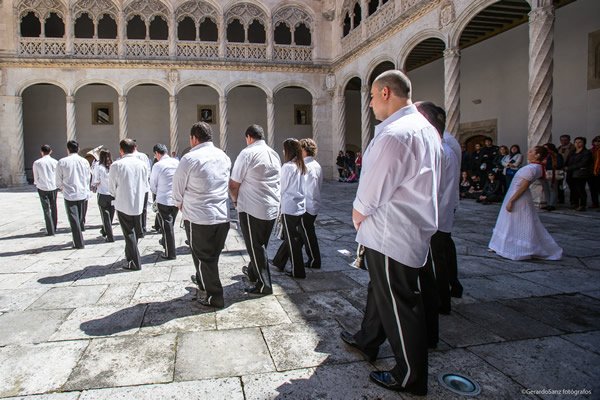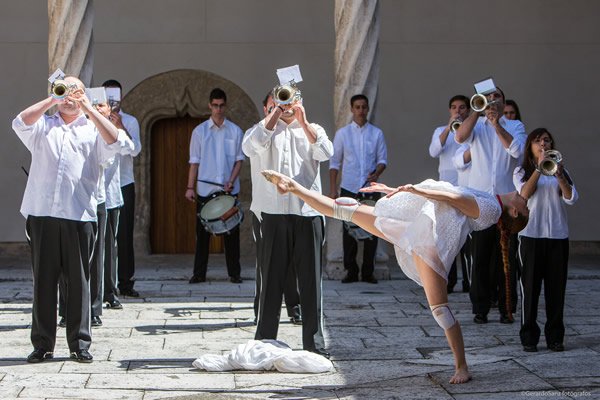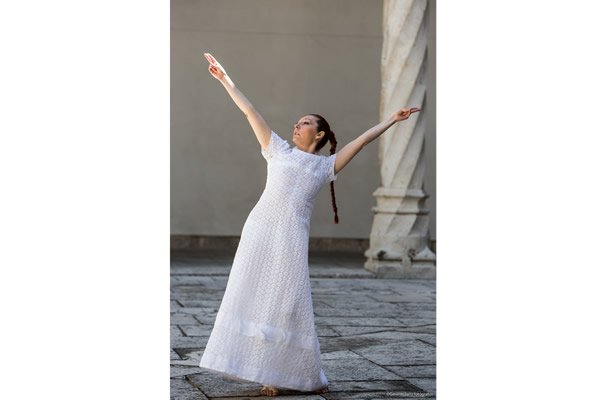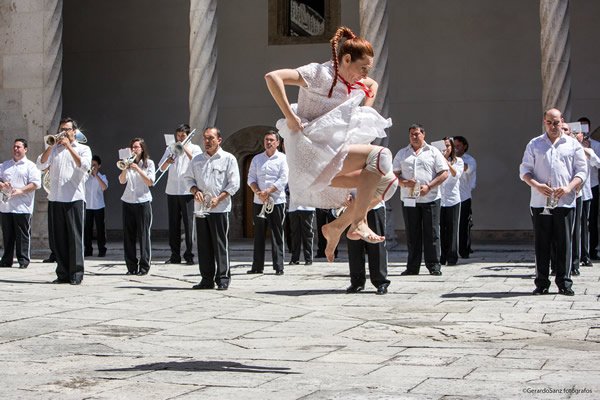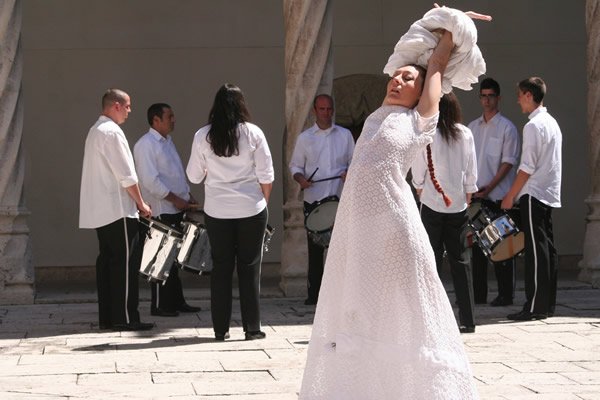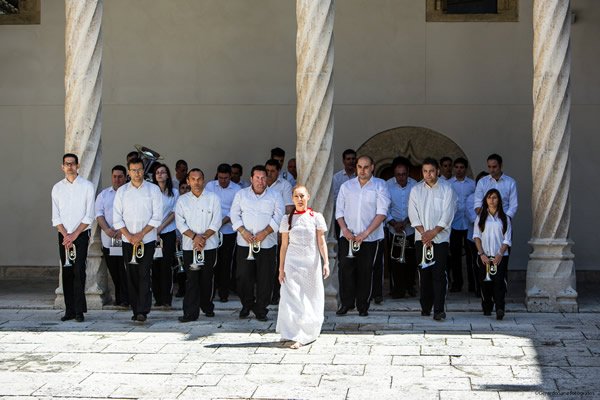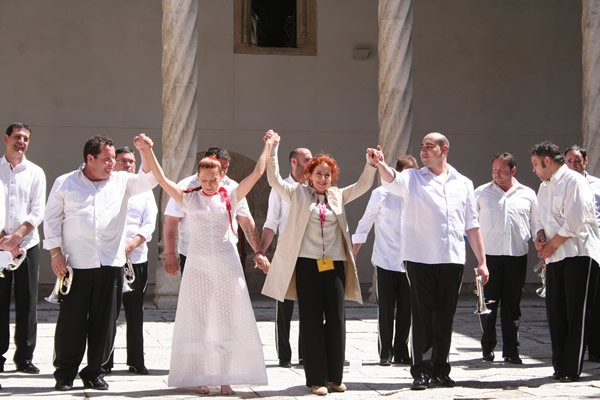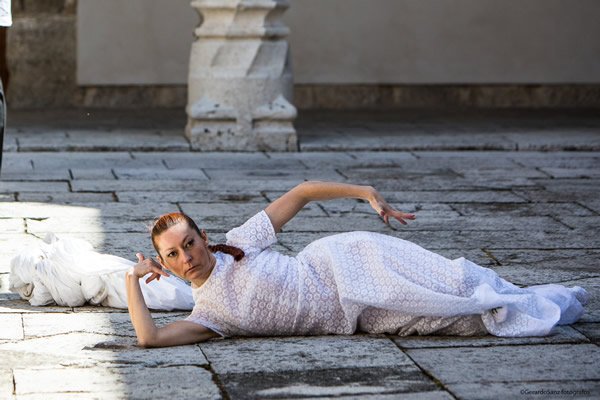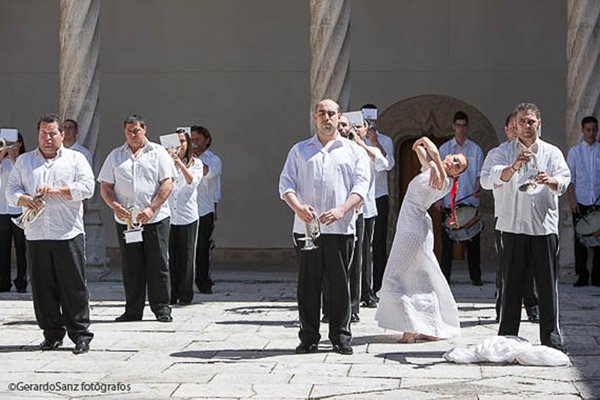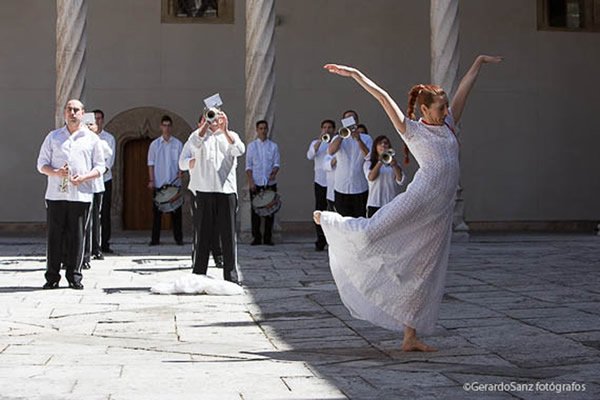"Study 2: Silence" is described as a introspective journey that uses silence as a means to reflect on the soul This piece is part of the triptych "Cartography of the Body in an Architectural Space," a larger research project that explores the relationship between architecture, the semiotics of the body, and the public. In this context, "Study 2: Silence" focuses on the exploration of the Absence of sound as an element loaded with meaning and as a space conducive to introspection and connection with the spiritual or internal dimension of the human beingSilence is not seen as a simple lack of noise, but as an active element that allows us to hear and perceive subtle aspects of existence and of our own being. Choreography, in this context, becomes a language that translates these reflections and sensations through movement, creating a scenic landscape where silence is the protagonist and guides the journey of both the performers and the audience. The work invites a contemplative experience, where the spectator is led to a state of mindful attention to the nuances of movement and stage presence, in contrast to the omnipresence of sound in everyday life. The work lasts approximately 50 minutes and is aimed at young and adult audiences.
“The look learns by looking.
There is no way to build the gaze if it is not by exercising it: looking, observing and analyzing.
There is no way to separate the text from the image.
The text is a way of looking and the images are forms of discourse.
Writing leads to silence and the look to blindness.
(Text by Santiago Olmo, Subtraction of color, exhibition by Bernardí Roig, Instante Blanco, National Museum of Sculpture).
Premiere on May 24, 2014, in the cloister of the National Museum of Sculpture.
As an architectural space, the cloister of the National Sculpture Museum of Valladolid.
As sound, the accompaniment of the Band of Bugles and Drums "Sagrada Lanzada" from Valladolid.
The color, the white of the stone, the subtraction of color in the face of polychromy.
Silence in the face of the loud sound of the drums that rumbles from the stone and the wind, which slips through the metallic wind.
The living sculpture as if it were a human being.
And an audience, hunter of emotions, always watching.
